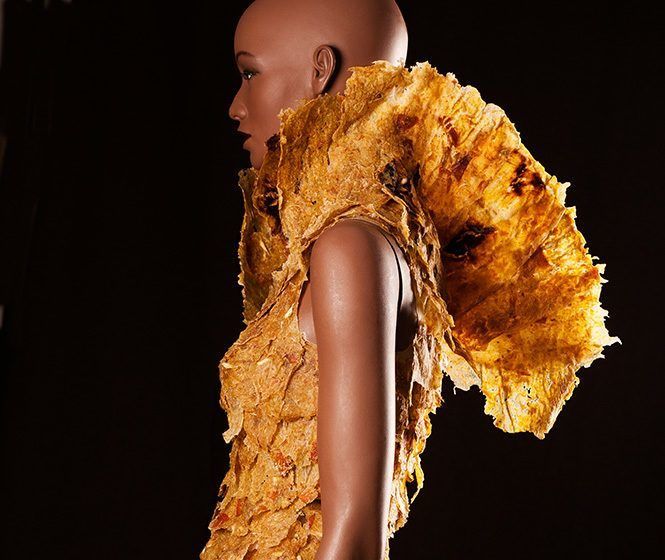
Can you imagine yourself in a dress made of orange peels? What do you think of the use of eggshells as a building material? Or about using coffee as a material for making plates and cups?
It is no secret that single-use plastic has irreversible obnoxious effects on the planet. According to a 2019 report by WWW, from 2000 to 2016, we produced half as much plastic as between 1950 and 2000. And the rate keeps growing. The more information we have about the damage caused by plastic to the planet, the more we produce. Paradoxical, isn’t it?
This situation results in us leaving a sediment layer made of new materials, such as plastic, aluminium, cement or chicken bones. The scientific world uses the term Anthropocene to designate this new epoch that emerged around 1950. This global fossil record and the impact of human activities on Earth are Anthropocene’s main characteristics, as explained in Ar@cne magazine edited by the University of Barcelona.
Faced with the massive increase in single-use plastics, many activist organisations are campaigning to address the situation. At the Menja, Actua, Impacta [Eat, Act, Impact] exhibition you will find a diversity of highly innovative alternatives.
Here are 10 of these alternatives to disposable plastic:
1. ORANGE-PEEL DRESS
Can you imagine a dress made out of food? Sounds surreal, right? Well, if you come to visit the exhibition you can see it with your own eyes! It is a dress made of orange peels. It is 100% biodegradable, 100% compostable, water resistant, elastic and rigid at the same time, with a certain plasticity.
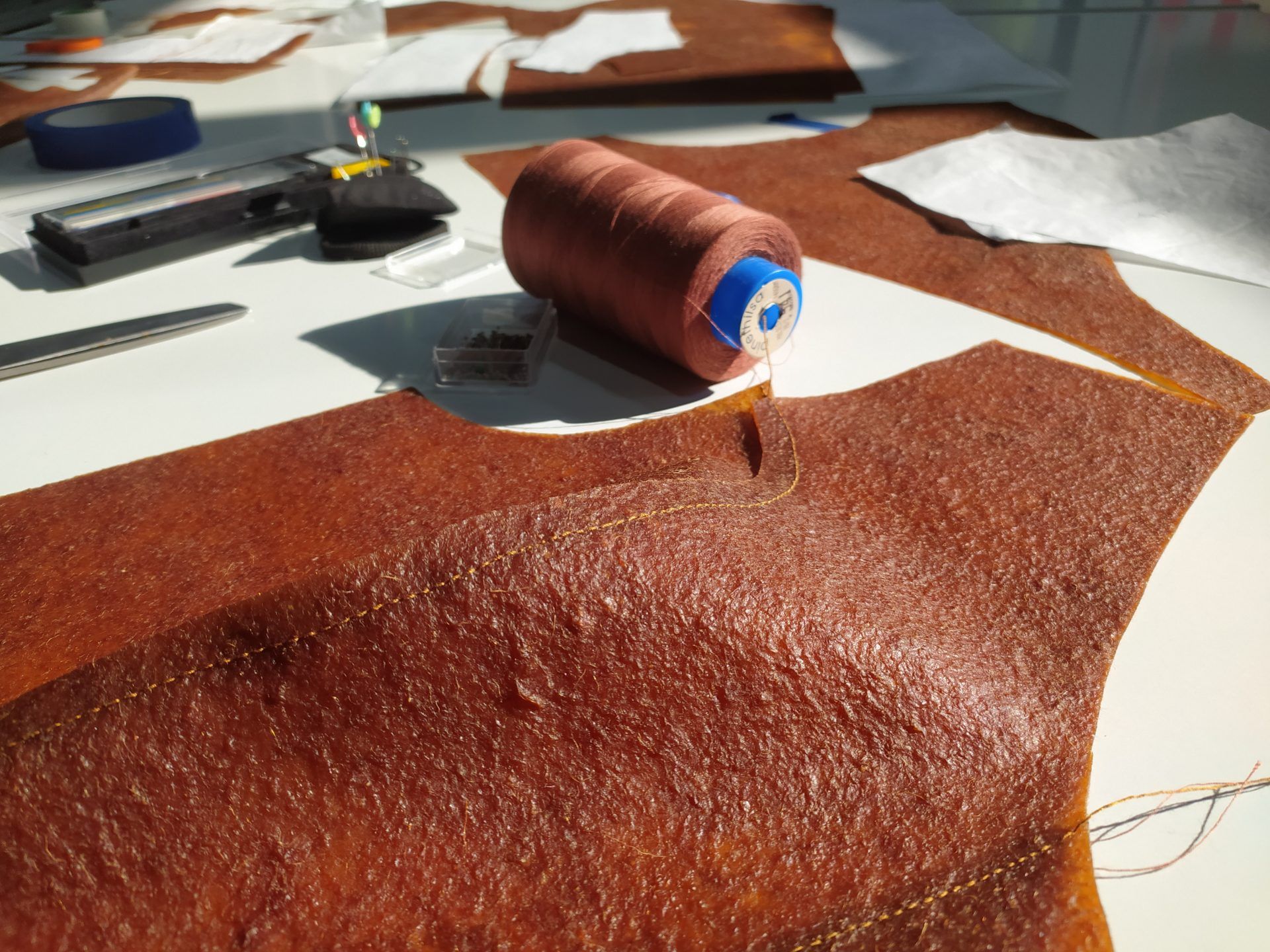
2. CROCKERY MADE FROM PALM LEAVES
Palm leaves are a very interesting material for packaging. It is very light and useful for making takeaway trays. The leaves used are those that fall naturally from the palm trees; they are not specifically cut.
When they fall, the leaves are washed and put in a bath with turmeric or some other spice and water. Then, they are dried and compressed and due to their particular composition, they can be modelled by applying heat. In addition, (and thanks to the leaf composition again) the resulting package possesses antimicrobial properties without having to add other chemical compounds. Nature offers us amazing solutions, don’t you think?
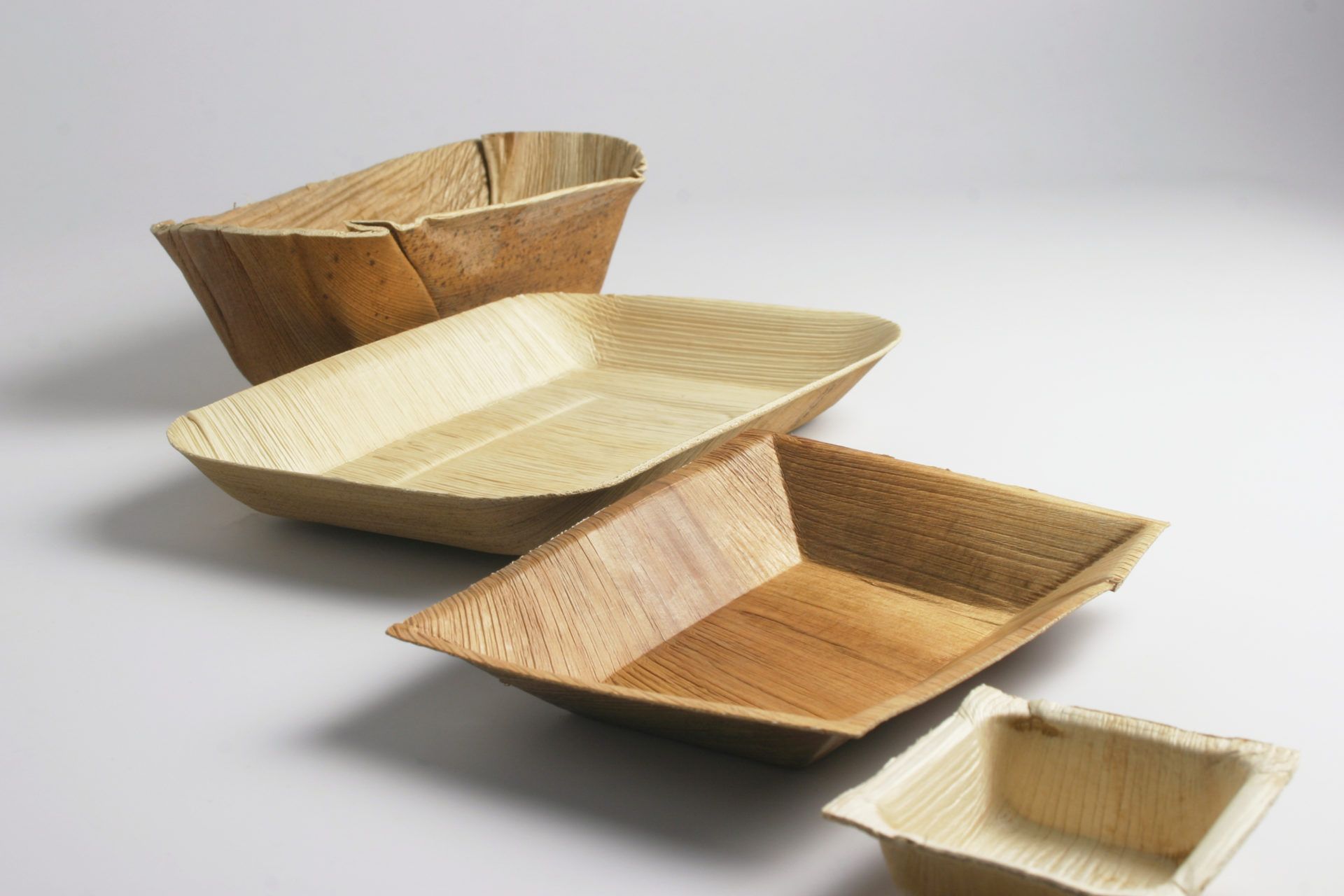
3. WASARA
Of Japanese origin, this material is virtually like paper. It is mixed with other materials, such as bamboo or bagasse – a by-product of sugar cane – and may also be mixed with wheat or rice husks.
The result is a cellulosic material which, when compressed in a mould, allows for beautiful designs and a certain rigidity of the material. It is compostable and biodegradable. It is used to create tableware in the most original shapes.
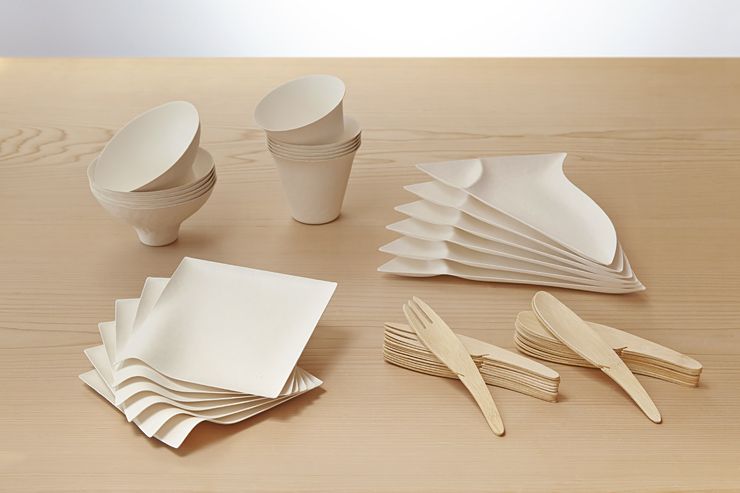
4. COFFEE DISHES AND BOWLS
Coffee grounds can become a fantastic addition to create rigid objects. It is a product usually thrown away. Millions of tonnes of coffee are consumed worldwide every day, so making the most of the residue generated can be very fruitful. A més, es pot barrejar amb altres materials, com les bio resines. Moreover, it can be mixed with other materials, such as bio-based epoxy resins. Thus, tableware such as dishes and bowls, quite resistant and with a very good smell, is created.
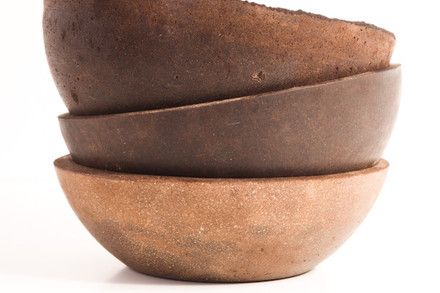
5. BIODEGRADABLE MATERIALS FROM EGGSHELLS: EGGO
This material is 70% eggshells. Like coffee, eggs are consumed in huge quantities around the world, so there are immense amounts of raw materials to produce eggo. The eggshell is largely made of calcium carbonate, which allows for a high degree of compaction. It can be mixed with casein, a protein in milk. By means of an acidification process, a biopolymer is generated that can be very useful in the construction sector, for example. Besides, it can be used to produce semi-rigid structures suitable for supporting food or delicate products such as the eggs themselves.
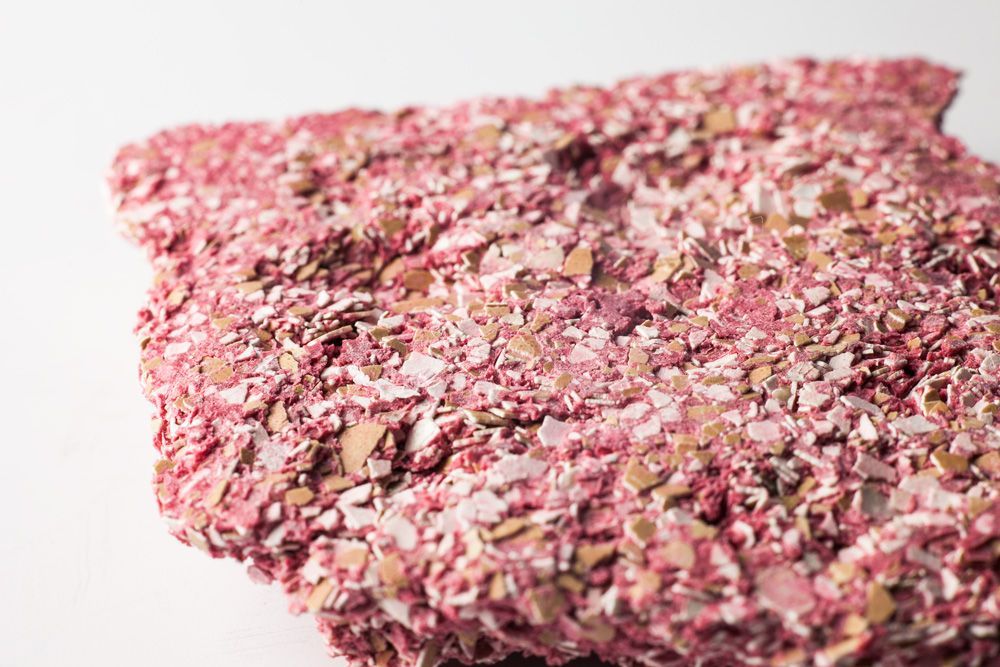
6. A TOUGH PROTECTION: COCONUT SHELL
Coconut shells possess properties that make them quite resistant to scratches and bumps. Besides, it is a very light material. Coconut shells are one of the residues of coconut oil production and can be used to produce protection materials.

7. WRAP THE SANDWICH WITH BEE’S WAX
Would you like a very original and sustainable reusable sandwich bag? Did you know there is reusable packaging for sandwiches (or your favourite snack) made from bee’s wax? Bee’s wax has antimicrobial and preserving properties, so food is kept fresh for more time (both in or out of the refrigerator). Moreover, their composition does not include any substance or product damaging to human health, they are reusable and can be cleaned with cool water.
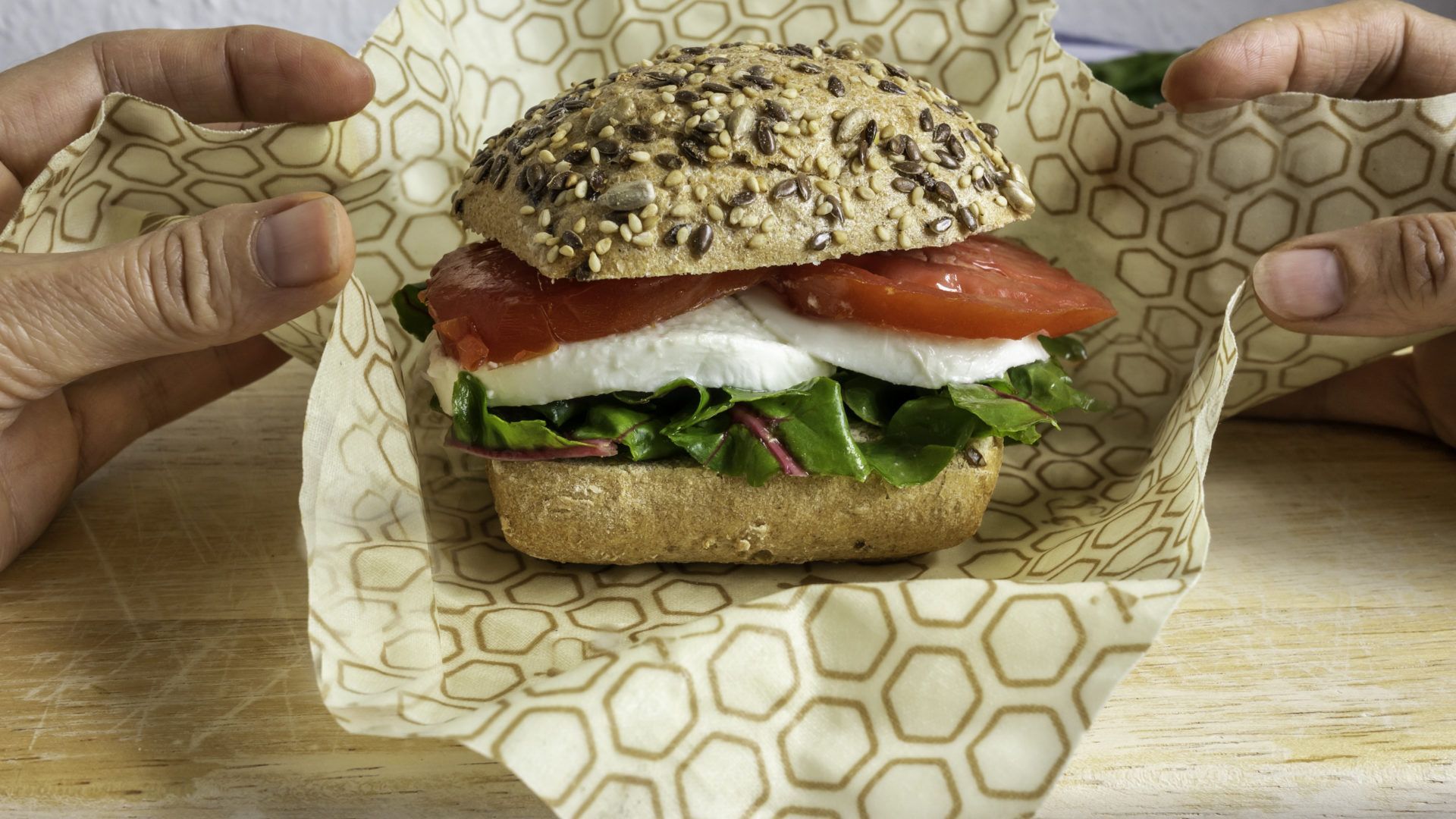
8. BIO NET TUBES
This biodegradable material offers consumers the advantage of keeping produce fresh for longer and prevents potatoes and onions from sprouting. The net can be composted and thus transformed into nutrients for new food products. This way, fresh produce no longer suitable for sale can be composted directly with its packaging.
These nets have a diversity of uses in the farming, packaging and construction sectors, and in technical nets, sports facilities and fishing.
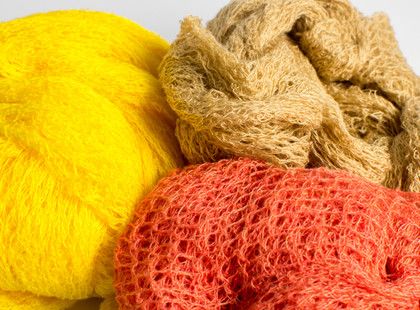
9. EDIBLE BOTTLES OF WATER

Ooho! is a natural container made with seaweed, totally compostable and biodegradable
Ooho! arises from the need to find an alternative to the millions of plastic bottles that are used and rejected every day for water consumption.
The goal is to create a residue-free alternative to plastic bottles and cups that is as cheap as plastic and capable of containing most liquids. To drink the water, simply break the sphere and sip it from the inside.
10. PAPAYA AGAINST PLASTIC

The papaya is a palm-like, single-stemmed perennial plant, originally from Mesoamerica, currently grown in different subtropical areas of the world, among them the northwestern area of Jujuy province, in Argentina.
Papaya stems have the thickness and strength to create a new type of biodegradable vegetable straw, or pajita, in Spanish, whence: Payitas. The production of Payitas is positive in many ways: it creates a biodegradable product, reduces environmental impact and generates a source of income for some vulnerable rural farmers. Moreover, papaya fibres do not alter the taste of any drink.
SUMMING UP
Below, we offer an interview with Robert Thompson, Materfad’s scientific director, whom you will also find in the solutions market of the Menja, Actua, Impacta [Eat, Act, Impact] exhibition. Most of the initiatives described in this article are the result of the work of Barcelona’s Materials Centre (Materfad).
However, although these initiatives are notably innovative and great substitutes for plastic, we must remember that the best waste is always that which has not been generated. So it is better to use a material that can be washed and reused than one that is biodegradable. But it is better to use a biodegradable material than a disposable plastic one.
As Robert Thompson denounces, however, disposable plastic is still predominant in the food industry. He explains that the packaging sector, in general (beyond the food system), tends to be highly polluting.
He also calls on consumers to be responsible in their purchasing choices. If consumers want sustainable, reusable and biodegradable products, packaging companies will be forced to produce enough of them. He thus emphasises the significance of our choices in making a positive impact on the reduction of single-use plastic.
What do you think about these initiatives? Do you know any others? Come to the exhibition and learn everything there is to know about disposable plastic and what we can do to eliminate it from our lives!

